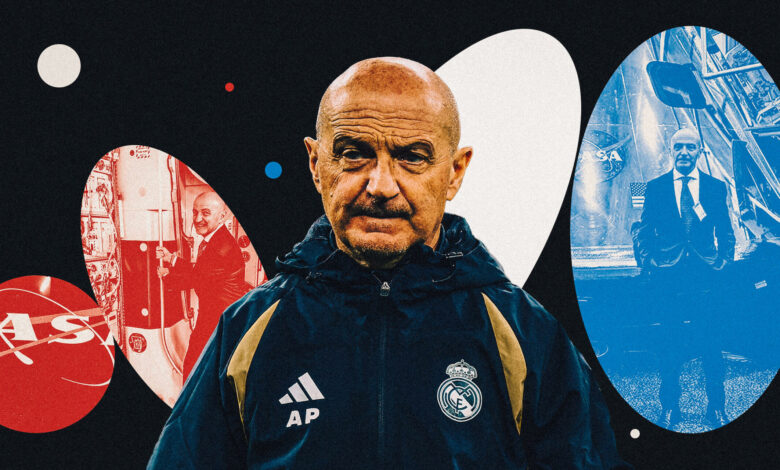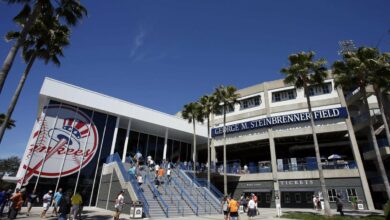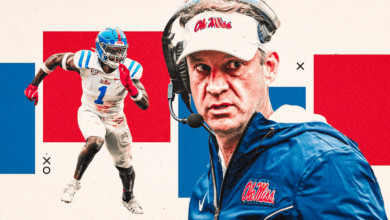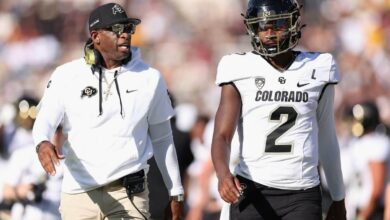How Real Madrid’s physical trainer is helping NASA with the Artemis moon program

Real Madrid could go stratospheric.
They recently passed the €1 billion ($1.1 billion; £844 million) mark in revenue for the 2023-24 season and boast a squad valued at €1.8 billion by the CIES Football Observatory. Now space could be the next frontier thanks to a partnership between their physical trainer Antonio Pintus and NASA.
Pintus is working with the space agency as part of the Artemis program, which aims to return humans to the moon for the first time since 1972. The Italian visited the agency’s Johnson Space Center in Houston, Texas, to give talks on how his methods can be applied to their work and how astronauts can stay fit during missions.
Pintus is a key figure at Madrid, combining technology and data analysis. Players call him ‘the sergeant’ due to the intensity of his training, but have great respect and affection for him. He was recently appointed the club’s performance director and head fitness coach, which shows the status he has.

GO DEEPER
Loved, feared, ubiquitous: who is Antonio Pintus, Real Madrid’s physical trainer?
Pintus’ relationship with NASA began last summer when Madrid toured the United States in pre-season. Carlos Garcia-Galan, a Spanish engineer with the agency, was invited to a Madrid training session in Houston after meeting club legend and ambassador Emilio Butragueno on a previous tour.
“I was introduced to Antonio and he told me he was very interested in NASA’s missions,” Garcia-Galan said. The Athletics“During that training we only spoke for 10 minutes, but we immediately saw that there were many topics we agreed on and that we could do something about them (together).”
Garcia-Galan works on the Orion spacecraft program, part of the Artemis campaign. NASA’s goal is to go to the moon every year, and it consulted with Pintus because it wants to make sure the physical preparation is “state of the art” for these missions.
Pintus visited the Johnson Space Center — where astronauts are trained — during an international break a few months after that first meeting with Garcia-Galan. He spent a week there, visiting the labs and training center, seeing firsthand how the astronauts prepare, and riding in a simulator of the vehicle that will be used in the Orion mission. He also spoke with employees from every department of NASA.

Pintus tries out a NASA vehicle (NASA)
“You can’t beat Real Madrid when it comes to demonstrating athletic performance,” said Judith Hayes, NASA’s chief science officer for human health and performance. “He has a wealth of experience, even outside of track and field.
“He became very popular — he has quite a presence. Our scientists, exercise physiologists, astronauts, doctors, trainers, engineers were hanging on every word he had to share with us. He was able to challenge our people and our thinking. It made us think about different ways of looking at things.”
A lack of space in spacecraft means astronauts can’t move around as much as they’d like. Pintus’ visit prompted NASA’s engineering team to consider developing machines or specific exercises that could be incorporated into astronauts’ routines in space.
“Astronauts don’t have to be athletes, but the same methods can still work,” Garcia-Galan said. “We were interested in exploring that a little bit more.”
NASA was impressed by how Pintus uses data in his work to determine the physical condition of each player. Aided by assistants Giuseppe Bellistri and Sebastien Devillaz, his team maintains a comprehensive database that helps them prepare for the demands of each season.
Pintus sends Madrid players individual plans during the holidays. Last summer, he used special masks to record the squad’s oxygen and carbon dioxide levels to personalize their training programs.

The Italian puts Jude Bellingham and co. to the test (Gerard Franco/Dax Images)
Garcia-Galan and Hayes say this is something astronauts can use as part of their preparation for missions to improve their fitness.
“I admire a lot of the data that he has on his phone, real-time,” Hayes said. “We were really excited that he shared with us the things that he’s monitoring with his athletes. I was especially excited because he would pull out his phone every day and he could see the data of his athletes and how well they were doing.
“Even though he wasn’t there, he was keeping up with them. Our goals are a little bit different — but it was good that we participated in this technical exchange of ideas, because it certainly challenges our status quo.”
This isn’t the first time NASA has used sport to improve its methods.

GO DEEPER
How videos, NASA technology and ‘carb power’ helped Liverpool avoid ‘largest banana peel in history’
The agency works informally with professional teams in Texas, including the NFL’s Houston Texans, the MLB’s Astros, the NBA’s Rockets and Major League Soccer’s Houston Dynamo. It has also worked with several universities and collegiate teams around the world.
“We’re always looking for the best engineers and pilots who can become astronauts; Antonio falls into that category,” Garcia-Galan said. “But I don’t remember anything this extensive (with a sports team) being done before.”
The partnership with Pintus continues today, with Garcia-Galan visiting the team’s training camp in Chicago on Monday. Madrid traveled there on Saturday to prepare for games against AC Milan (Chicago) on Wednesday, Barcelona (East Rutherford, New Jersey) on Saturday and Chelsea (Charlotte, North Carolina) next Tuesday before the season kicks off with the European Super Cup against Atalanta on August 14.

Pintus at the Johnson Space Center in Houston, Texas (NASA)
“We’re evaluating what areas of study we want to explore together,” Garcia-Galan said. “We could go to a conference and present something together, like what soccer methods can be used to train astronauts or vice versa. Some astronauts met him and were also interested in what he had to offer.”
Could we soon see Pintus himself leading a space mission for NASA?
“No, no,” says Garcia-Galan. “I know for sure that he wants to stay at Real Madrid — and I don’t want him to leave as a Madridista! He is always learning and innovating in his field. It’s about looking for opportunities for collaboration that we and he can benefit from.”
(Top photos by Angel Martinez/Getty Images, Carlos Garcia-Galan; design by Eamonn Dalton)




